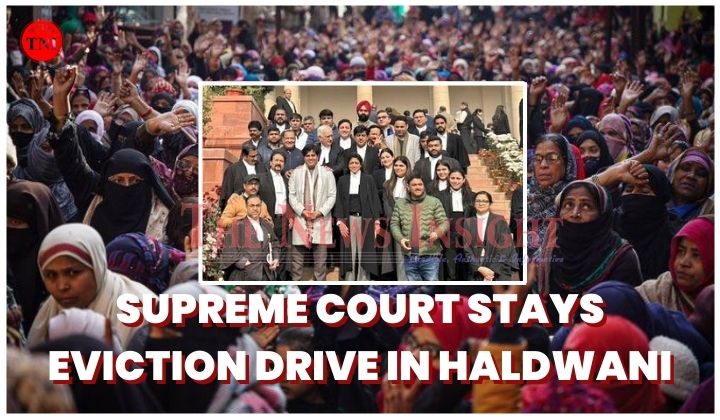The Supreme Court on Thursday stayed an Uttarakhand High Court’s order to clear encroachments from a 29 acres railway property in Haldwani. The court referred to the matter as a “human issue” and stated that 50,000 people cannot be uprooted overnight.
A bench of Justices S K Kaul and A S Oka stated that a suitable solution needed to be found amidst objections from locals who maintain their ownership of the land. The railways estimate that there are 4,365 people encroaching on the land. On the contested property, approximately 4,000 families and close to 50,000 people, comprising a majority of Muslims live.
In response to a number of petitions contesting the high court’s order for the clearance of encroachments, the apex court sent notices to the railways and the state government, seeking their responses.
The Notice read as follows, “In the meantime, there shall be stay of directions passed in the impugned order,”
The bench said, that “We do consider that a viable solution is necessary to segregate people who may not have any legal standing in the land… paired with plans of rehabilitation which may already exist while respecting the necessity of the Railways.”
Speaking on behalf of some of the petitioners, Senior Advocate Dr. Colin Gonsalves said that the families of the petitioners had owned the land since before independence and that they had held the government leases that had been signed in their Favour. Senior Attorney Siddharth Luthra added that numerous petitioners had government leases signed in their Favour. Salman Khurshid, a senior attorney, said that several properties were located on “nazul” lands.
Justice Kaul informed the State of these representations after taking note of them, “State of Uttarakhand has to find a practical solution.”
It further stated that the state government’s stance on whether the entire piece of land should vest in the railways or if the state is claiming a portion of it would be a moot argument that needed to be taken into account. The bench said in addition to that, there are problems with tenants claiming rights to the property as lessees, leasehold ownership, or auction purchases.
Following a lengthy legal battle, the district administration published a notice in the newspapers ordering residents to remove their possessions by January 9 in response to the court’s ruling of December 20.
Support Independent Journalism? Keep us live.
Activists and politicians had also joined the demonstrations, accusing the BJP administration of taking action against a region where the majority of the population happens to be Muslim.
Harish Rawat, a prominent member of the Congress and a former chief minister, observed a one-hour “Maun Vrat” (vow of silence) at his residence in the state capital Dehradun.
“Arbitrary and illegal” strategy used by the railways
While the residents claim in their argument that the high court committed a serious mistake by issuing the contested ruling despite knowing that the district magistrate is now hearing proceedings pertaining to the title of the inhabitants, including the petitioners. In Banbhoolpura, there are homes, businesses, schools, and places of worship distributed on a 29-acre plot of land.
The people claim that the “arbitrary and illegal” strategy used by the railways and state officials, as well as the high court’s support of it, has seriously violated their right to shelter.
The petitioners assert that they are in possession of legitimate documentation that clearly show their title and authorized occupation.
Many locals assert that they purchased homes during the government’s auction of families who left India during Partition in 1947.
While hearing a PIL submitted by Ravi Shankar Joshi on November 9, 2016, the high court ordered the removal of encroachments from the railway land within 10 weeks.
The court had ruled that the Railway Public Premises (eviction of unauthorized occupants) Act of 1971 should be applied to all encroachers.


Comments are closed.